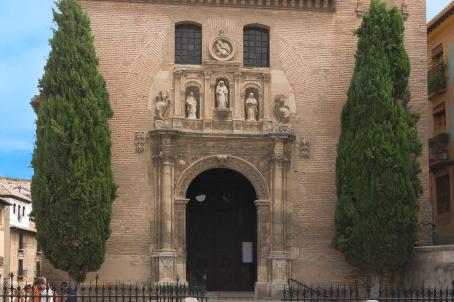Madrasah of Granada

Founded by the Sultan of Granada himself in the 14the century, the Madrasah of Granada is located in the heart of Granada's old city. The only surviving part of the madrasah is the prayer room with carved, polychrome plaster covers the upper portions of the walls.
About this building
The madrasah was founded by the order of Nasrid monarch Yusuf I for teaching Islamic theology, law, medicine, astronomy, logic, mathematics etc. Among its numerous students, the polymath Ibn al-Khatib stands out to have his poems inscribed on the walls of adjacent palace of Alhambra for decoration. During the Reconquista, the building was transformed into the city hall, yet the pedagogical function made its back in the recent history of 20th century when it became part of the University of Granada. In spite of the vicissitudes of the changing past, nowadays, visitors can still admire the original Moorish oratory and mihrab.





